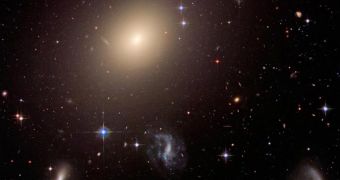Scientists announce the development of a new computer algorithm that is capable of classifying galaxies depending on their shape and size. The system works in a manner very similar to that of the human brain, from which it draws its inspiration. Such an accomplishment is tremendously important for the field of astronomy, as experts have been battling to classify the billions and billions of galaxies within our Universe for years. With the creation of the new algorithms, astronomers now have a new hope that this will become easier, and that the software will assist them in the daunting task ahead.
There are numerous classes of galaxies, ranging from barrel spirals and simple spirals to elliptical, and the sheer number of these cosmic structures is overwhelming. Astronomers have admitted a long time ago that they cannot create classifications of all galaxies on their own, and even created websites where people can assist them. But these efforts still fall short of the classification rate needed to ensure that a catalog could be finished during our lifetimes. With the new model, this may become possible, scientists believe. According to the British team of investigators that created the model, the software agrees with human-made classifications about 90 percent of the time.
The model was developed by a collaboration of researchers from the University College London (UCL) and the University of Cambridge. “Next generation telescopes now under construction will image hundreds of millions and even billions of galaxies over the coming decade. The numbers are overwhelming and every image cannot viably be studied by the human eye,” says University of Cambridge astronomer Manda Banerji. She adds that projects such as the Sloan Digital Sky Survey and the Galaxy Zoo continuously produce new data on never-before-seen galaxies, and that all this information needs to be introduced within existing catalogs.
“While human eyes are very efficient in recognizing patterns, clever computational techniques that can reproduce this behavior are essential as we begin to push the boundaries of our observable Universe and detect more distant galaxies. This study is an important step in that direction,” UCL astrophysicist Ofer Lahav believes. According to the scientific paper the team published in the latest issue of the esteemed scientific journal Monthly Notices of the Royal Astronomical Society, the real challenge for the new learning algorithms will be to classify galaxies that do not fall neatly into existing categories. These may include those of irregular shapes, or those in the process of merging, Space reports.

 14 DAY TRIAL //
14 DAY TRIAL //